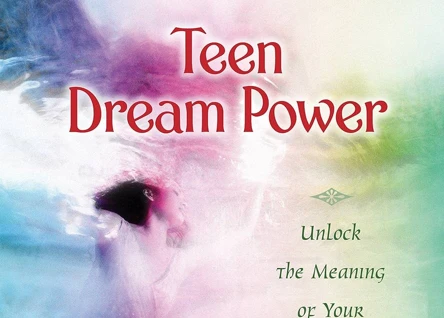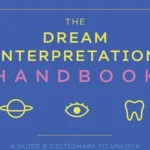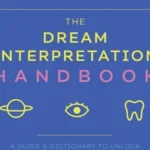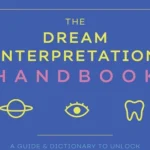Introduction
Dreams have fascinated humans for centuries, igniting a deep sense of curiosity and wonder. They can transport us to other worlds, replay past events, or bring forth hidden desires. Unlocking the mysteries of our dreams has been a pursuit that many individuals have embarked upon, seeking to understand the meaning behind these enigmatic experiences. One particular aspect of dreams that often intrigues individuals is the phenomenon of repeat dreams. These recurring dreams can hold valuable clues about our subconscious mind and provide profound insights into our waking lives. In this comprehensive dream dictionary, we will delve into the significance of dreams, the decoding of repeat dreams, exploring the dream dictionary, and techniques to unlock the meaning of these recurring visions. So, let us embark on this captivating journey into the realm of dreams and unravel their secrets.
Understanding the Basics of Dreams
Before diving into the intricacies of repeat dreams, it is important to understand the basics of dreams and their significance. Dreams serve as a window into our subconscious mind, offering a unique insight into our thoughts, emotions, and experiences. They are a manifestation of our innermost desires, fears, and anxieties. In addition to being a source of entertainment and intrigue, dreams also play a vital role in processing emotions and memories. They provide a platform for us to process and make sense of our daily experiences, allowing us to work through unresolved conflicts or emotions. There are different types of dreams, including lucid dreams, nightmares, and of course, repeat dreams. Each type holds its own significance and offers a glimpse into different aspects of our psyche. By understanding these fundamental aspects of dreams, we can begin to unlock the mysteries they hold and delve deeper into the world of dreams.
– The Significance of Dreams
Dreams hold great significance in our lives, acting as a bridge between our conscious and unconscious minds. They provide us with valuable insights into our thoughts, emotions, and experiences. Here are some key reasons why dreams are significant:
1. Dreams as problem-solving tools: Dreams have the ability to solve complex problems and come up with creative solutions. It is not uncommon for individuals to wake up with a new perspective or idea after dreaming about a particular issue.
2. Emotional processing and healing: Dreams serve as a means of processing and healing emotional wounds. They allow us to confront and work through unresolved emotions, traumas, and anxieties.
3. Predictive qualities: In some cases, dreams have been known to offer glimpses into future events or provide intuitive insights. While not all dreams are prophetic, there have been instances where dreams have accurately foreshadowed real-life occurrences.
4. Symbolic representations: Dreams often communicate through symbols and metaphors, allowing our subconscious mind to express itself in abstract and symbolic ways. Decoding these symbols can provide a deeper understanding of our inner thoughts and desires.
5. Enhancing creativity: Dreams can spark creativity and inspiration. Artists, writers, and musicians often draw inspiration from their dreams, utilizing the unique imagery and ideas generated during the dream state.
By recognizing the significance of dreams, we can begin to appreciate their role in our lives and harness their potential for personal growth and understanding. Whether it’s a lamb dream with its gentle symbolism or a vivid nightmare that raises questions about our deepest fears, exploring our dreams can lead us to a deeper understanding of ourselves.
– The Role of Dreams in Processing Emotions
Dreams serve as a powerful tool in processing emotions, allowing us to explore and navigate the complexities of our feelings. During sleep, our minds have the opportunity to process and integrate the emotions we have experienced throughout the day. This emotional processing occurs through various dream scenarios and symbolism. Dreams can provide a safe environment for us to confront and examine difficult emotions that may be buried deep within our subconscious. For example, if we have experienced a traumatic event, such as a car accident, our dreams may replay that event as a means of processing the associated emotions and helping us heal. Similarly, if we have unresolved conflicts or unresolved emotions, they may manifest in our dreams as a way for our minds to work through these issues. By allowing us to experience and process these emotions in a safe and controlled environment, dreams contribute to our overall emotional well-being and growth. They can provide valuable insight into the inner workings of our minds and help us make sense of the complexities of our emotions.
– Different Types of Dreams
Dreams come in various forms, each with its own unique characteristics and meanings. Understanding the different types of dreams can provide valuable insights into our subconscious mind and the messages it is trying to convey. Here are some of the most common types of dreams:
1. Lucid Dreams: These dreams occur when you become aware that you are dreaming while still in the dream. It offers a level of consciousness and control, allowing you to actively participate and manipulate the dream’s storyline.
2. Nightmares: Nightmares are intense and distressing dreams that often evoke fear, anxiety, or a sense of danger. They can stem from real-life experiences, fears, or unresolved traumas.
3. Prophetic Dreams: Prophetic dreams are believed to provide glimpses into the future. They may contain symbolic imagery or messages that can serve as guidance or warnings.
4. Recurring Dreams: Recurring dreams are dreams that repeat themselves over time, with similar themes, settings, or events. They often carry significant messages and may indicate unresolved issues or emotions that need attention.
5. Healing Dreams: These dreams are characterized by their ability to bring about emotional healing and resolution. They may provide comfort, closure, or insight into personal growth and transformation.
6. Epic Dreams: Epic dreams are vivid, detailed, and often complex dreams that feel like epic adventures or narratives. They can leave a lasting impact, making them memorable and thought-provoking.
By recognizing the different types of dreams, we can begin to decipher the hidden meanings within them and gain a deeper understanding of our subconscious mind’s workings. From lucid dreams that grant control to nightmares that reflect our deepest fears, each dream offers a unique opportunity for self-reflection and growth.
Decoding Repeat Dreams
Repeat dreams, as the name suggests, are dreams that occur repeatedly over a period of time. These dreams may feature similar scenarios, settings, or themes, captivating us with their persistence. Decoding these repeat dreams can provide valuable insights into our subconscious mind and shed light on unresolved emotions or experiences. Common themes in repeat dreams can vary widely, ranging from falling, being chased, or even encounters with specific people or animals. Theories abound as to why we have repeat dreams. Some experts believe they are an indication of unresolved issues or emotions that need to be addressed, while others suggest they may be a form of processing past traumas or experiences. It is essential to analyze and analyze lift-lift patterns in these dreams as they hold valuable clues about our own thoughts, feelings, and experiences. By paying attention to the patterns and symbolism in repeat dreams, we can unlock the hidden messages they hold and gain a deeper understanding of ourselves. Whether it’s a lamb dream, a rape dream, or a dream about the biblical meaning of roofs, exploring the depths of repeat dreams is a fascinating endeavor that can lead to personal growth and self-discovery.
– What Are Repeat Dreams?
Repeat dreams, as the name suggests, are dreams that occur repeatedly over a period of time. Unlike regular dreams that tend to be fleeting and quickly forgotten upon waking, repeat dreams persist and recur with a similar theme or storyline. These dreams may feature the same characters, settings, or narrative elements that remain consistent across different instances. They often leave a deep impression on the dreamer, provoking a sense of curiosity and prompting the question of why they continue to occur. Repeat dreams can span days, weeks, or even years, making them a fascinating phenomenon to explore. They can vary in intensity and frequency, with some individuals experiencing them sporadically while others have them more frequently. The content of repeat dreams can vary widely, ranging from mundane scenarios to vivid and emotionally charged imagery. Regardless of their specific content, these recurring dreams carry significant meaning and can provide valuable insights into our subconscious thoughts and emotions.
– Common Themes in Repeat Dreams
When exploring repeat dreams, it becomes apparent that certain themes tend to recur across different individuals. These common themes can shed light on the underlying messages and emotions that these dreams convey. One prevalent theme is the experience of being chased, which symbolizes a sense of fear or anxiety in one’s waking life. Another common theme is falling, which may reflect a feeling of insecurity or a lack of control. Other recurring themes include being unprepared for an important event, being naked in public, or teeth falling out. These themes often stem from deep-rooted fears, insecurities, or unresolved issues in our waking lives. By paying attention to these common themes in repeat dreams, we can begin to decipher the messages our subconscious is trying to communicate to us.
– Theories on Why We Have Repeat Dreams
1. Repetition for Processing: One theory suggests that repeat dreams occur as a way for our minds to process and make sense of significant events or emotions. These dreams act as a form of mental rehearsal, allowing us to revisit and analyze these experiences from different perspectives.
2. Unresolved Issues: Another theory proposes that repeat dreams arise when we have unresolved issues or conflicts in our lives. These dreams serve as a reminder that there is something we need to address or confront, urging us to take action or seek resolution.
3. Deeply Rooted Patterns: Some psychologists believe that repeat dreams are a result of deeply ingrained patterns within our psyche. These patterns may stem from childhood experiences, traumas, or recurring themes in our lives. The dreams serve as a way to bring these patterns to our attention, providing an opportunity for self-reflection and personal growth.
4. Emotional Release: Repeat dreams can also be a mechanism for emotional release. They allow us to express and release pent-up emotions that we may not be consciously aware of in our waking lives. These dreams act as a cathartic outlet, helping us to find emotional balance and relief.
5. Symbolic Significance: Lastly, some theories suggest that repeat dreams contain symbolic messages that hold personal significance. These symbols may represent aspects of our subconscious mind or carry hidden meanings specific to our individual experiences. Deciphering the symbols can provide deeper insights into our inner thoughts and emotions.
These theories provide different perspectives on the occurrence of repeat dreams. While the exact reasons may vary from person to person, exploring these theories can help shed light on the underlying meaning and purpose of these intriguing and recurring dreams.
– The Importance of Analyzing Repeat Dreams
Repeat dreams, as the name suggests, are dreams that occur repeatedly over a period of time. These recurring dreams hold a special significance and should not be ignored. The importance of analyzing repeat dreams lies in the understanding that they are trying to convey a message or highlight a specific aspect of our lives that needs attention. By taking the time to decode the symbols, themes, and emotions present in these dreams, we can gain valuable insights into our subconscious mind. Repeat dreams often indicate unresolved issues, unresolved emotions, or patterns that we may be repeating in our waking lives. By analyzing these dreams, we can identify areas for personal growth, address lingering emotions, and make positive changes to our lives. Ignoring repeat dreams means missing out on the opportunity to gain self-awareness and create positive transformations. So, it is crucial to acknowledge the importance of analyzing repeat dreams and to embrace the wisdom they offer.
Exploring the Dream Dictionary
Once we have gained a basic understanding of dreams, it is time to explore the dream dictionary and delve into the intricate symbolism and meanings behind the elements that appear in our dreams. The dream dictionary acts as a guide, providing interpretations and insights into the symbols, objects, animals, and people we encounter in our dreams. By uncovering the hidden meanings behind these dream elements, we can unravel the messages our subconscious mind is trying to convey. Symbols hold great significance in dreams, and their interpretation can vary based on cultural, personal, and universal associations. Animals and creatures that appear in our dreams often represent our instincts, desires, or certain qualities and characteristics we possess. Objects and places in dreams can hold deep symbolic meanings that reflect our subconscious thoughts or emotions. People and relationships in dreams can provide insights into our interpersonal connections, unresolved issues, or aspirations. By exploring the dream dictionary, we empower ourselves with the tools to unlock the rich symbolism and meanings within our dreams, paving the way for a deeper understanding of ourselves and our subconscious mind.
– Symbols and Their Interpretations
As we explore the dream dictionary, one of the key components to deciphering the meaning behind our dreams lies in understanding the symbols and their interpretations. Dreams are often filled with various symbols that can hold personal or universal meanings. These symbols can range from everyday objects to fantastical creatures, each carrying its own significance. For example, dreaming of a /lamb-dream/ may symbolize innocence or purity, while dreaming of a /rape-dream/ may represent feelings of violation or powerlessness. These symbols can be shaped by our personal experiences, cultural backgrounds, and even the collective unconscious. Interpreting these symbols requires a certain level of introspection and reflection, as they are deeply connected to our individual experiences and emotions. By delving into the rich world of symbols and their interpretations, we can unlock the hidden messages within our dreams and gain a deeper understanding
Subscribe to Our Newsletter
Sign up to receive the latest news and updates.
– Animals and Creatures in Dreams
Animals and creatures that appear in our dreams carry symbolism and meaning that can provide valuable insights into our subconscious mind. Each animal or creature may represent different qualities or emotions that we possess or experiences that we are going through. For example, dreaming of a snake may symbolize transformation, healing, or a hidden threat. Butterflies may represent growth, change, and the emergence of something beautiful. Understanding the symbolism associated with different animals and creatures can help us decipher the messages contained within our dreams. It is important to consider both the general symbolism attributed to an animal and personal associations we may have with them. Exploring the presence of animals and creatures in our dreams can unveil hidden aspects of ourselves and guide us towards a deeper understanding of our inner world.
– Objects and Places in Dreams
Objects and places in dreams hold symbolic meanings that can provide valuable insights into our subconscious desires, fears, and experiences. When analyzing dreams, it is essential to pay attention to the specific objects or places that appear, as they often carry significant messages. Here are some common objects and places found in dreams and their possible interpretations:
1. Water: Water symbolizes emotions and the subconscious mind. The calmness or turbulence of the water can reflect the individual’s emotional state, while diving into water may represent deep exploration of the unconscious.
2. Bridges: Bridges in dreams often represent transitions and connections. Crossing a bridge can signify overcoming obstacles or making a significant life change. It may also symbolize a connection between two aspects of your life or two different parts of yourself.
3. Keys: Keys are powerful symbols of unlocking or uncovering hidden aspects. Seeing or holding a key in a dream may suggest a new opportunity or the need to unlock a particular aspect of your life or personality.
4. Houses: Houses in dreams signify our sense of self and security. The different rooms within the house represent different aspects of your life. Pay attention to the state of the house, as a well-maintained house may indicate stability, whereas a crumbling or haunted house may represent inner turmoil.
5. Mountains: Mountains often represent challenges and obstacles in dreams. Climbing a mountain signifies determination and the willingness to overcome difficulties. The height and grandeur of the mountain can also reflect the magnitude of the challenges you are facing in your waking life.
By analyzing the specific objects and places within your dreams, you can gain a deeper understanding of your subconscious mind and the messages it is trying to convey. Remember, the interpretation of these symbols may vary based on personal experiences and cultural influences.
– People and Relationships in Dreams
In the vast landscape of dreams, people and relationships often take center stage. Our dreams are populated by a myriad of characters, both familiar and unfamiliar, who play significant roles in shaping the dream narrative. These dream figures may represent aspects of ourselves, reflections of people we know, or even symbolize archetypal qualities. Examining the people and relationships within our dreams can provide profound insights into our waking lives. For example, dreaming about a loved one may highlight our emotional connection and the importance of that relationship in our lives. On the other hand, encountering a stranger in a dream might signify the exploration of new and unfamiliar aspects of ourselves or the need to connect with others outside of our comfort zone. By paying attention to the interactions, emotions, and dynamics among people in our dreams, we can gain a deeper understanding of our social connections, desires, and challenges in our relationships.
Techniques to Unlock the Meaning of Repeat Dreams
Unlocking the meaning of repeat dreams requires a combination of techniques and approaches. One effective technique is journaling and dream analysis. By keeping a dream journal, you can track recurring themes, symbols, and emotions present in your repeat dreams. Analyzing these patterns over time can help you uncover underlying messages and themes in your dreams. Another approach is consulting a dream interpreter or therapist who specializes in dream analysis. These professionals can provide valuable insights and interpretations of your repeat dreams based on their expertise and experiences. Additionally, practicing meditation and visualization can be beneficial in unlocking the meaning of repeat dreams. These techniques allow you to connect with your subconscious mind and tap into your inner wisdom. Through deep relaxation and focused contemplation, you can gain clarity and understanding of the messages embedded within your dreams. Utilizing these techniques in combination or individually can enhance your ability to decipher the meaning of your repeat dreams and gain valuable insights into your psyche.
– Journaling and Dream Analysis
One effective technique for unlocking the meaning of repeat dreams is through journaling and dream analysis. Keeping a dream journal allows you to record your dreams immediately upon waking, capturing every detail and emotion while they are still fresh in your mind. This practice helps establish a pattern and consistency in your dream recall. As you consistently write down your dreams, you may start to notice recurring themes, symbols, or characters that appear across multiple dreams. These patterns can provide valuable insights into the messages your subconscious is trying to convey. Analyzing your dreams involves examining the symbols and themes present in your dream journal and reflecting on their possible meanings. Look for connections between your dreams and your waking life, and consider how certain symbols or themes may relate to your current thoughts, emotions, or experiences. Journaling and dream analysis can be a powerful tool for self-reflection and personal growth, helping you unravel the hidden messages behind your repeat dreams.
– Consulting a Dream Interpreter
When it comes to decoding the meaning of repeat dreams, it can be beneficial to consult a dream interpreter or analyst. These individuals specialize in understanding the symbolism and hidden messages within dreams. They have in-depth knowledge of various dream interpretation techniques and can help unravel the complexities of your recurring dreams. A dream interpreter can provide insights and guidance, helping you gain a deeper understanding of the symbols and themes present in your dreams. They can also assist in uncovering the underlying emotions and experiences connected to your repeat dreams. By seeking the expertise of a dream interpreter, you can gain valuable insights and perspectives that may not have been apparent to you initially. They can offer a fresh and objective perspective on your dreams, facilitating personal growth and self-discovery. Consulting a dream interpreter can be a powerful tool in unlocking the meaning and significance of your repeat dreams.
– Meditation and Visualization
Meditation and visualization are powerful techniques that can aid in unlocking the meaning of repeat dreams. By practicing meditation, we can quiet the mind and create a conducive environment for introspection. Through meditation, we can develop a heightened sense of awareness and connect with our subconscious on a deeper level. This allows us to delve into the symbols and themes present in our dreams and gain clarity about their significance. Visualization, on the other hand, involves actively imagining and mentally recreating the dream scenario. By immersing ourselves in the dream imagery and emotions, we can gain insights into our subconscious desires and fears. Visualization can also be used to manipulate and alter the dream scenario, providing an opportunity to actively engage with the dream symbols and explore their meaning. Whether practiced individually or in combination, meditation and visualization offer valuable tools for unlocking the hidden messages within our repeat dreams.
Conclusion
Repeat dreams are a captivating and thought-provoking aspect of the dream world. These recurring dreams contain valuable messages and insights from our subconscious mind. By analyzing and decoding these dreams, we can gain a deeper understanding of ourselves and the challenges we may be facing in our waking lives. The dream dictionary serves as a valuable tool in deciphering the symbolism and meanings behind the elements present in our dreams. Whether it is animals, objects, or people, each holds a significance that can provide guidance and illumination. Techniques such as journaling and dream analysis, consulting a dream interpreter, and practicing meditation and visualization can help us unlock the meaning of repeat dreams. So, let us embrace the world of dreams, explore the depths of our subconscious mind, and uncover the profound wisdom that lies within.
Frequently Asked Questions
What are some common themes in dreams?
Common themes in dreams can vary widely, but some frequent ones include flying, falling, being chased, teeth falling out, and being naked in public. These themes often reflect underlying emotions or situations that we’re grappling with in our waking lives.
Why do we dream?
The exact purpose of dreaming is still a subject of research and debate. However, dreams are believed to serve various functions such as memory consolidation, emotional processing, problem-solving, and creativity stimulation.
Can dreams predict the future?
While some people may claim to have had prophetic dreams, there is no scientific evidence to support the idea that dreams can predict the future. Dreams are more often influenced by our subconscious mind and personal experiences.
What are lucid dreams?
Lucid dreams are dreams in which the dreamer becomes aware that they are dreaming. This awareness allows the dreamer to have some control over their dream, leading to a more immersive and interactive experience.
Do dreams have hidden meanings?
The interpretation of dreams varies greatly from person to person and depends on individual beliefs and experiences. While some people ascribe hidden meanings to dreams, others view them as purely random and subjective experiences.
Can animals and creatures in dreams have symbolic meanings?
Yes, animals and creatures in dreams can have symbolic meanings. For example, a dream about a lion may be associated with strength and courage, while a dream about a snake can symbolize transformation or hidden fears.
How can journaling help in analyzing dreams?
Journaling allows you to record and reflect upon your dreams in detail. It helps identify recurring themes, patterns, and emotions, providing insights into your subconscious mind. By journaling your dreams over time, you may begin to notice connections and recurring symbols.
What is a dream interpreter?
A dream interpreter is a person who specializes in analyzing and deciphering the meaning of dreams. They can help individuals explore the symbolism, emotions, and messages within their dreams, providing interpretations and guidance.
What is the biblical meaning of dreams?
In biblical times, dreams were often regarded as messages from God or divine sources. Throughout the Bible, dreams played a significant role in delivering prophecies, guidance, and insight into God’s will.
Can meditation and visualization aid in understanding dreams?
Meditation and visualization can be valuable tools for enhancing dream recall, relaxation, and self-awareness. By practicing these techniques, you can develop a deeper connection with your dreams and access the subconscious wisdom they may hold.










